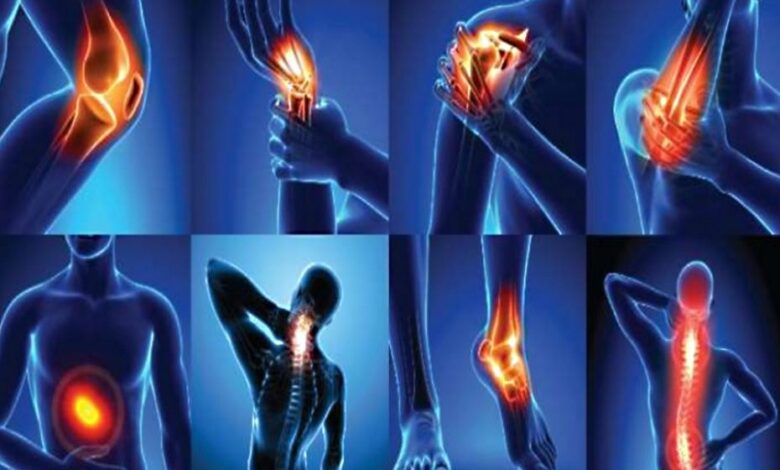Pain and Stress: Methods for Combined Relief

Stress and discomfort are typical sensations in today’s fast-paced and demanding environment, and they can have a major negative impact on our quality of life. Both chronic pain and chronic stress can have an adverse effect on daily activities, relationships, and general well-being. The physical discomfort associated with pain and the emotional toll of stress are two examples. It’s interesting to note that there is a connection between stress and pain: stress can make pain worse, and pain can make stress levels rise. Maintaining a balanced and healthy existence requires an understanding of and response to this twin challenge. This article looks at some methods for controlling and reducing pain and stress.
Recognizing the Relationship Between Pain and Stress
Understanding the connection between stress and pain is crucial before implementing any treatment measures. The nervous system plays a mediating role in the body’s reaction to stress, especially when it comes to the release of stress hormones like cortisol and adrenaline. These hormones prime the body for a “fight or flight” reaction, which can be harmful if it is repeatedly triggered, even in situations where it is helpful in the short term. Prolonged stress can cause inflammation, tense muscles, and brain abnormalities that increase pain sensitivity.
In a similar vein, stress can be brought on by pain. Particularly chronic pain can cause helplessness, anxiety, and despair, all of which can increase pain perception. This leads to a vicious cycle where stress and pain exacerbate one another, making control and alleviation increasingly difficult.
Methods for Combining Relief
Managing pain and stress at the same time calls for a multimodal strategy that includes behavioral, psychological, and medical therapies. The following methods can assist in offering dual relief:
1. Meditation and Mindfulness
Two effective strategies for handling stress and discomfort are mindfulness and meditation. By concentrating attention on the here and now, these activities can help lower stress levels and lessen feelings of pain.
During mindfulness meditation,
You focus on your thoughts, feelings, and sensations without passing judgment on them. Research has demonstrated that by reducing activity in brain regions linked to pain processing and boosting activity in areas linked to emotional control, mindfulness meditation can both lessen the intensity of pain and enhance emotional well-being.
Body Scan Meditation:
This method is gradually moving your awareness over your entire body, from head to toe, noting any pain or tension. By locating stress and pain points, this technique enables targeted relaxation.
2. Exercise
Frequent exercise is one of the best strategies to manage pain and lower stress levels. Endorphins are naturally occurring substances that elevate mood and reduce pain when exercised.
Aerobic Exercise:
Engaging in physical activities like cycling, walking, jogging, and swimming might help lower stress hormones and raise endorphins. On most days of the week, try to get in at least 30 minutes of moderate activity.
Strength Training:
Increasing muscular mass helps shield and support joints, which lessens discomfort. Exercises for strengthening the body should be performed at least twice a week.
Yoga and Tai Chi:
These forms of exercise incorporate breathing techniques, meditation, and physical movement. Research has demonstrated their ability to mitigate tension, enhance range of motion, and ease discomfort, especially in instances of rheumatism and lumbago.
3. CBT, or cognitive-behavioral therapy
CBT is a psychological strategy that assists people in altering unfavorable thought patterns and actions that fuel discomfort and stress.
Cognitive restructuring is recognizing and combating unfavorable ideas that increase suffering and stress. For instance, you can increase your pain coping mechanisms and lessen stress by thinking, “I am managing my pain the best I can,” instead of, “I can’t handle this pain.”
Behavioral Activation:
Stress can be lowered and pain can be diverted by partaking in happy and fulfilling activities. This could involve volunteering, socializing, or engaging in hobbies.
4. Techniques for Relaxation
By soothing the neurological system, relaxation practices can help relieve pain and tension.
Deep Breathing:
In order to assist the body relax, slow, deep breathing can trigger the parasympathetic nervous system. Try taking a deep breath through your nose, holding it for a short while, and then gently letting it out through your mouth.
Progressive Muscle Relaxation:
This technique entails tensing and then gradually relaxing every bodily muscle group. It can aid in easing the tense muscles brought on by discomfort and stress.
Guided Imagery:
This method conjures up peaceful mental images through visualization. Stress can be lowered and pain can be diverted by visualizing a tranquil setting.
5. Choosing a Healthier Lifestyle
Choosing a healthy lifestyle can have a big impact on how stressed and how much pain you experience.
Nutrition:
Consuming a well-balanced diet full of whole grains, lean meats, fruits, and vegetables can help lower inflammation and enhance general health. Some meals, such as those rich in omega-3 fatty acids, offer pain-relieving anti-inflammatory qualities.
Sleep:
Getting enough sleep is essential for controlling pain and stress. Try to get seven to nine hours each night. Maintain a regular sleep schedule and make the bedroom cool, quiet, and dark to foster a restful atmosphere.
Hydration:
Maintaining adequate hydration is critical to general health. Stress levels can rise and pain can get worse when dehydrated. Try to have eight glasses of water or more each day.
6. Alternative Medical Interventions
Pain and stress reduction are achievable with a variety of complementary therapies.
Acupuncture:
This ancient Chinese medical procedure entails the insertion of tiny needles into predetermined body locations. It has been demonstrated that acupuncture lowers tension and discomfort by promoting the body’s natural healing mechanisms.
Massage therapy:
Receiving a massage on a regular basis helps ease pain and stress by promoting relaxation, enhancing circulation, and reducing muscle tension.
Chiropractic Care:
Adjustments made to realign the spine and relieve pain can help with certain forms of pain, especially those involving the back and neck.
7. Social Assistance
Having a solid support network can aid in the management of pain and stress.
Talking to Friends and Family:
You can get emotional support and relieve stress by confiding your experiences and feelings to people you can trust.
Support Groups:
Participating in a support group for those dealing with high levels of stress or chronic pain helps foster a sense of belonging and mutual understanding. These communities can provide both emotional support and useful guidance.
Expert Assistance:
Pain management specialists, therapists, and counselors can offer customized approaches and interventions to handle pain and stress.
8. Prioritization and Time Management
By giving people a greater sense of control over their life, effective time management can help people feel less stressed.
Establishing Priorities:
Set aside less important tasks and concentrate on what matters most. This may lessen the sensation of being overburdened.
Task Digestion:
Completing extensive chores can be intimidating. They can appear less daunting and more doable if you break them down into smaller, more reachable steps.
Taking pauses:
Taking regular pauses from work or other activities helps lower stress and avoid burnout. During these breaks, stretch, go for a quick stroll, or engage in deep breathing exercises.
9. Laughter and humor
Laughing and humor have the ability to significantly lower stress levels and lessen pain perception.
Reading Humorous Books or Watching amusing TV Shows:
Take some time to read books or watch amusing movies.
Laughter yoga is a form of yoga breathing methods combined with laughter exercises. It has been demonstrated to lessen stress and elevate mood.
10. Mind-Body Techniques
Including mind-body exercises in your regular routine helps improve the relationship between your physical and mental health.
Qigong:
This traditional Chinese exercise combines breathing exercises, meditation, and synchronized movement. It has been demonstrated to lessen stress and enhance pain control.
Biofeedback:
This method entails monitoring physiological processes (such as heart rate) with electronic devices and training the user to consciously manage them. Pain management and stress reduction are aided by biofeedback.
In summary
An all-encompassing strategy that takes care of the body and mind is necessary to manage stress and discomfort. A variety of strategies can be used to provide dual relief, including mindfulness meditation, exercise, cognitive-behavioral therapy, relaxation techniques, healthy lifestyle choices, alternative therapies, social support, effective time management, humor, and mind-body activities. People can enhance their capacity to manage stress and discomfort by incorporating these activities into their daily lives, which can result in a happier, more balanced, and healthier existence.



